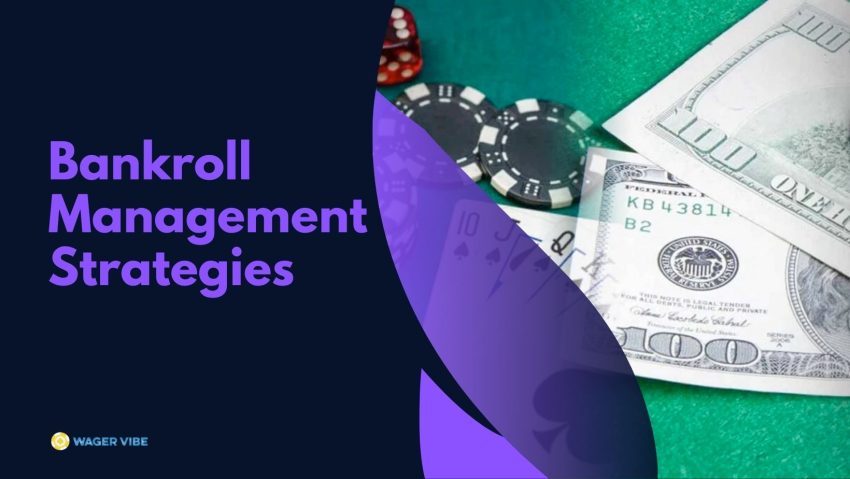A successful poker player must have many different skills. Bankroll management is one of the most important. You can play like a professional, but if you take an irresponsible approach to money management, there is a risk of losing everything sooner or later. With the right bankroll management, you can not only save, but also increase your funds.
The Importance of Bankroll Management
The first thing to understand about bankroll management is that it is necessary for your success as a casino player. Bankroll management is the process of allocating a certain amount of money for use in a casino, and then managing that money in such a way as to maximize your chances of winning and minimize the risk of losing.
Without good management, it’s easy to get carried away and spend more money than you can afford, which can lead to serious financial problems. Good management allows you to play within your means and avoid the risks associated with excessive gambling. For more information on managing your bankroll effectively and ensuring a responsible approach to online gambling, visit https://no-min-deposit-casinos.com
Sort out your personal finances before the game
Before you start playing at the casino, it is very important to carefully examine your personal finances. You should be aware of your income, expenses and debts and make sure that you have enough disposable income to cover your gambling activities.
It is also important to have a clear understanding of your financial goals. Are you playing for fun or trying to make a profit? Are you willing to take risks to increase your bankroll, or do you prefer not to take risks and stick to low-risk games? Understanding your personal finances and goals will help you create a financial management strategy that works for you.
Bankroll Separation Strategies

Splitting the bankroll is a key strategy aimed at minimizing risks and optimizing the potential for profit. Here are some effective approaches to splitting the bankroll:
Fixed Bankroll percentage
One of the most popular methods is to use a fixed percentage of the total bankroll for each bet or investment. For example, you can decide that each bet will be no more than 2% of the total bankroll. This helps to manage risks, especially in conditions of high volatility.
Dynamic scaling
In this approach, the bet size adapts depending on the current state of the bankroll. If the bankroll grows, the bet increases, and vice versa. This helps to maintain a balance between aggressive growth and conservative capital protection.
Segmentation by goals or activities
Divide your bankroll into different segments depending on your goals, activities or markets. For example, part of the bankroll can be allocated for trading on the stock market, another part for cryptocurrency, and a third for a reserve in case of unexpected expenses.
Profit reservation
Regularly extract a portion of the profit from an active bankroll. This not only protects your earnings, but also reduces psychological pressure, allowing you to make more informed decisions.
Stop Loss strategies
Set clear rules to reduce losses. This may include limits on the number of consecutive unsuccessful bets or the percentage of bankroll reduction after which you cease operations to reevaluate the strategy.
Flexibility and adaptation
It is important to regularly review and, if necessary, adjust your bankroll separation strategy in accordance with changing conditions and experience gained.
The main aspects of bankroll management
The basic principles of bankroll management can be divided into several key aspects.
The size of bets and their impact on the bankroll
It is important to determine the size of bets or investments taking into account the total size of the bankroll. The generally accepted practice is to risk no more than a certain percentage of the total bankroll per bet or trade. This helps to prevent the rapid loss of the entire bankroll and allows you to maintain financial stability even in case of unsuccessful decisions.
Diversification
Don’t put everything on the same card. Risk sharing through diversification helps to reduce potential losses and ensure a more stable financial position.
Record and analyze results
Keeping detailed records of the results of your bets or investments will help you better understand which strategies work and which do not. It also allows you to improve decision-making and bankroll management strategies.
Setting goals and plans for the future
Define your long-term and short-term financial goals. This will help you stay focused and avoid impulsive decisions that can negatively affect your bankroll.
Self-discipline and Emotional control
Successful bankroll management requires iron self-discipline and the ability to control emotions, especially in moments of success or failure. Avoid making decisions influenced by emotions.
Flexibility and adaptation
Markets and conditions are constantly changing, and it is important to be prepared to adapt your bankroll management strategies in accordance with these changes.
You might like Understanding Casino Bonus Terms and Conditions
Risks and how to manage them

Risk management is a key component of effective bankroll management. Understanding and controlling risks helps protect capital and maximize profit potential. Here are the main strategies for risk management:
- Risk identification: The first step is to identify the potential risks associated with your business. This may include market risks, credit risks, operational risks, etc.;
- Risk assessment: After identifying the risks, it is necessary to assess their probability and potential impact on your bankroll. This helps to prioritize risks and develop appropriate risk management strategies;
- Setting stop losses: A stop loss is a tool that automatically closes a position when a certain loss level is reached, thereby limiting your losses and protecting your bankroll;
- Diversification: The distribution of investments or rates across different assets or markets helps to reduce the risk of concentration and dependence on one source of income or one market;
- Use of hedging: Hedging involves the use of financial instruments to reduce potential losses from adverse market changes. This can be especially useful when managing large bankrolls.
- Rational Decision making: Avoid making decisions based on emotions. Careful analysis and clear strategies should be used;
- Continuous learning and adaptation: Financial markets and conditions are constantly changing. It is important to continue to learn and adapt your risk management strategies to stay relevant;
- Reserve capital: Having reserve capital in reserve in case of unexpected market changes or losses can be critical to maintaining financial stability.
Using these strategies helps to reduce the impact of negative events on your bankroll and ensure more sustainable and thoughtful financial management.




